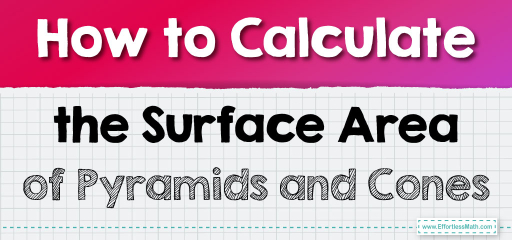How to Calculate the Surface Area of Pyramids and Cones

Examples
Practice Questions:
- Determine the surface area of a triangular pyramid with a triangular base of area \(15 \text{ cm}^2\), base perimeter of \(18 \text{ cm}\), and a slant height of \(9 \text{ cm}\).
- What is the surface area of a cone with a radius of \(4 \text{ cm}\) and a slant height of \(8 \text{ cm}\)?
- \( 96 \text{ cm}^2 \)
- \( 150.8 \text{ cm}^2 \)
Original price was: $109.99.$54.99Current price is: $54.99.
Original price was: $109.99.$54.99Current price is: $54.99.
Original price was: $114.99.$54.99Current price is: $54.99.
Related to This Article
More math articles
- GED Math Question Types
- What is the Best Calculator for the PSAT Test?
- How to Solve Linear Inequalities?
- Word Problems Involving Volume of Cubes and Rectangular Prisms
- What Is the Best GED Math Study Guide?
- What Skills Do I Need for The CBEST Math Test?
- p-Series in Infinite Sums: Convergence Test Simplified
- Top 10 4th Grade OST Math Practice Questions
- ASVAB Arithmetic and Mathematics Preview
- How to Choose the Best Laptop for College?




























What people say about "How to Calculate the Surface Area of Pyramids and Cones - Effortless Math: We Help Students Learn to LOVE Mathematics"?
No one replied yet.